Doctor Who: Flux “Chapter One: The Halloween Apocalypse” Review – A Suitably Epic WHO-loween Treat
Clint Hassell gives his spoiler-filled commentary on the opening episode of Series 13.

Note: this review contains full SPOILERS for episode 1 of Series 13.
After the mixed bag of Series 12 – – a series whose highs (the reveals of the Master, Jack Harkness, and the Fugitive Doctor, for example) were more than matched by its lows (the reveal of the Timeless Child; the return of Jack Robertson; the continued presence of Graham and Ryan, after their narrative arc concluded in Series 11; “Benni!”) – – the first episode of Series 13 crackles with kinetic energy and promise, as it endeavors to set a plethora of plot threads into motion.
The opening scene of “Chapter One: The Halloween Apocalypse” may be the “Doctor Who-iest” thing that Chris Chibnall has written during his tenure as showrunner, if not ever. A seemingly inescapable predicament – – the perilousness of which seems not to faze the Doctor or Yaz – – capped by a physics-defying fall through a CGI-realized landscape and wrapped with a standard bit of the Doctor’s technobabble and dry humor. Is the scene a silly bit of improbability? Certainly, but it doesn’t paint the Doctor or her companion as incapable, a trick that defined the best of The Sarah Jane Adventures which, despite its lighter tone, never infantilized its cast.
Short though it was, this scene was needed. Glossing over the first all-female TARDIS team in the series’ history would’ve been a disservice to the fandom, who’ve endured a male Doctor paired with a litany of flirty, in-love companions; shrieking, stock companions; “impossible girls”; and doe-eyed mentees. It’s been a long while since the narrative has featured the Doctor enjoying traveling with a friend, and Yaz and the Doctor look to be having as much fun as Ten and Donna, or Two and Jamie.
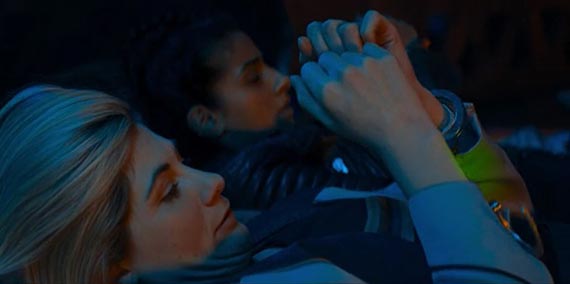
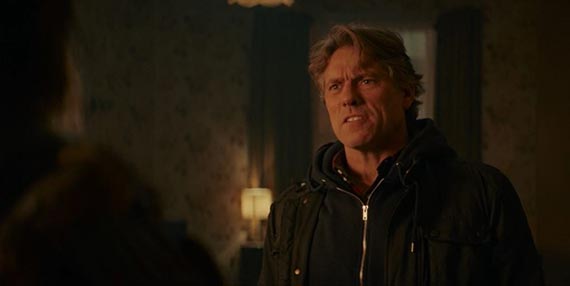
Later interactions between Yasmin and the Doctor are layered with subtext, hinting at how the two characters have developed during their adventures together. Yaz bristles when the Doctor talks at her, in stark contrast to her role as the Doctor’s confidante in Series 11 and 12. The Doctor has been investigating Karvanista since before this adventure started, and is now experiencing mind “glitches,” but won’t tell Yasmin why. “The Halloween Apocalypse” hammers home what may be Thirteen’s defining trait: she keeps her feelings and plans secret, and covers that silence with zaniness and “experiences of a lifetime.” Despite the apparent distance between the two, it’s interesting to see how Doctor-like Yaz has become, as she rescues Dan from his electrified cage with a witty repartee and bravado that recalls the Time Lord.
Speaking of Dan, the Doctor’s newest companion is less well-served by “Chapter One,” earning possibly the worst introduction since a fearful Mickey clung to Rose’s knees in modern Who’s initial episode. Dan gives tours at a museum where he doesn’t work, because he fancies a staff member! He volunteers at a food bank, yet is impoverished himself, spending what little money he does have on candy for neighborhood trick-or-treaters! Dan may be nice, but he currently lacks agency – – a reason to be included in this particular adventure.
A similar problem haunts new villains Swarm and Azure, whose introductions appear so immersed in Series 12’s “Timeless Child” storyline that they suffocate what could be notable additions to the canon. A prisoner of the Division, the organization revealed to have erased the Doctor’s pre-Hartnell memories, Swarm states that he and the Doctor have fought before, though the Doctor doesn’t recall their years “dancing through space and time, locked in combat.” Swarm seemingly regenerates in his introductory scene, before freeing his sister, Azure, who is disguised as a human woman, as if by a chameleon arch. Are they Gallifreyan? Are they connected to the Flux? It’s difficult to discern as Flux’s myriad plot threads are only beginning to weave together.
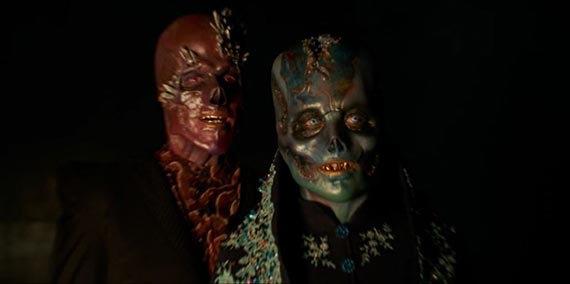
It’s not just questions regarding Dan’s importance or Swarm and Azure’s origins that need answering. “Chapter One” leaves its audience with many obvious inquiries:
- Why is Williamson digging tunnels under Liverpool, in 1820?
- Why is the TARDIS bleeding, and why does the Doctor underplay its obvious significance? Is it tied to her visions of Swarm?
- To what was the couple in the Arctic Circle being alerted? Why, despite ostensibly making sacrifices to live in isolation as part of their duties, would they now ignore the incoming warning message?
- How are the Sontarans involved with the Flux? Are they excited because they caused it, or because they will get to fight it?
Even more tantalizing are the episode’s more esoteric questions:
- “Chapter One” references Halloween to such great effect that one wonders why the showrunners place such emphasis on the Yuletide holiday every series. Surely, with its dark tone, eerie settings, creepy monsters, and inherent cosplay element, Doctor Who is more suited to the Halloween season.
- Why is there a mattress in the console room of the TARDIS? Is this where the Doctor and Yaz sleep, now? Previous companions Amy and Rory got a bedroom! Could the TARDIS’ ever-increasing “surplus of doors” and erratic behavior be such an ongoing concern that the Doctor and Yaz have resorted to constantly monitoring the ship through the night?
- Who is Claire? Is her tearful self-admonishment, “You’ve got to go home, now,” an indication that she knows the time-displaced fate that awaits her? The episode blatantly copies the conversation between Sally Sparrow, Ten, and Martha from the epilogue of “Blink,” though this time from the vantage point of the Doctor and her companion. Is it a coincidence that Claire looks like she could be Sally’s older sister? Or, is her admission that she was “taking the long way home” a better indicator of her true nature?
- Why does Azure possess Diane? For an adventure this sprawling in scope, it is too coincidental that the woman Azure abducts is also the love interest of the man kidnapped by Karvanista.
Hopefully, this serial’s six-episode length will give Chris Chibnall the room he needs to reveal each of Flux’s mysteries in turn. To fault “Chapter One” for not answering every question would be folly, and the episode does a respectable job of laying out eight as-yet-unconnected plot threads as foundation. History will judge Flux for its sum total, not its parts.

And, undoubtedly, the scope of Flux is incredible. It’s like a more fully realized “Praxeus,” or Miracle Day on acid. Knowing which characters, set pieces, and props will appear across all of Flux’s six episodes – – and with the entire Series 13 budget at their disposal – – the artists behind Doctor Who are able to dedicate resources more effectively, resulting in visual and practical effects, costumes, and set designs that befit the serial’s epic breadth.
Random Musings:

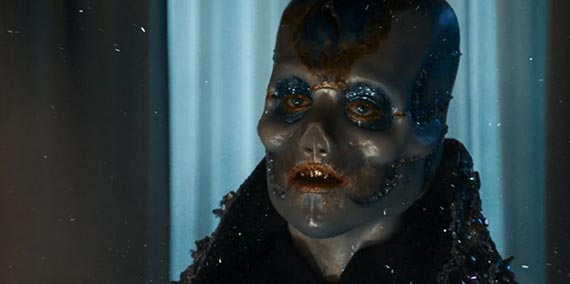






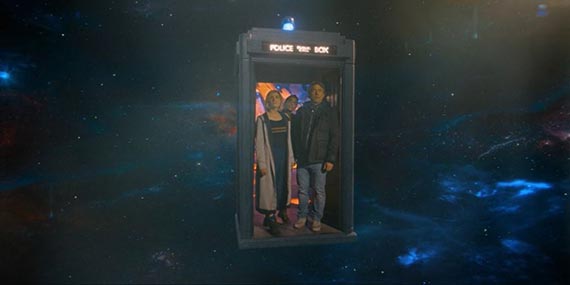

(Time) Capsule Review:
Now entirely serialized and titled Doctor Who: Flux, Series 13 opens with an episode that is broad in scope, but narrowly escapes entanglement in its many, newly introduced plot threads. The relationship between the Doctor and Yaz continues to be filled with subtext, enriching Yaz’s character development. Less well served is new companion Dan, who lacks agency, and the villains Swarm and Azure, whose ties to Series 12’s “Timeless Child” storyline references the worst of that series. Still, with the Weeping Angels and the Sontarans returned to form – – not to mention the ideal pairing of Doctor Who and Halloween – – “Chapter One: The Halloween Apocalypse” looks to be a brilliant start to modern Who’s most epic adventure.








